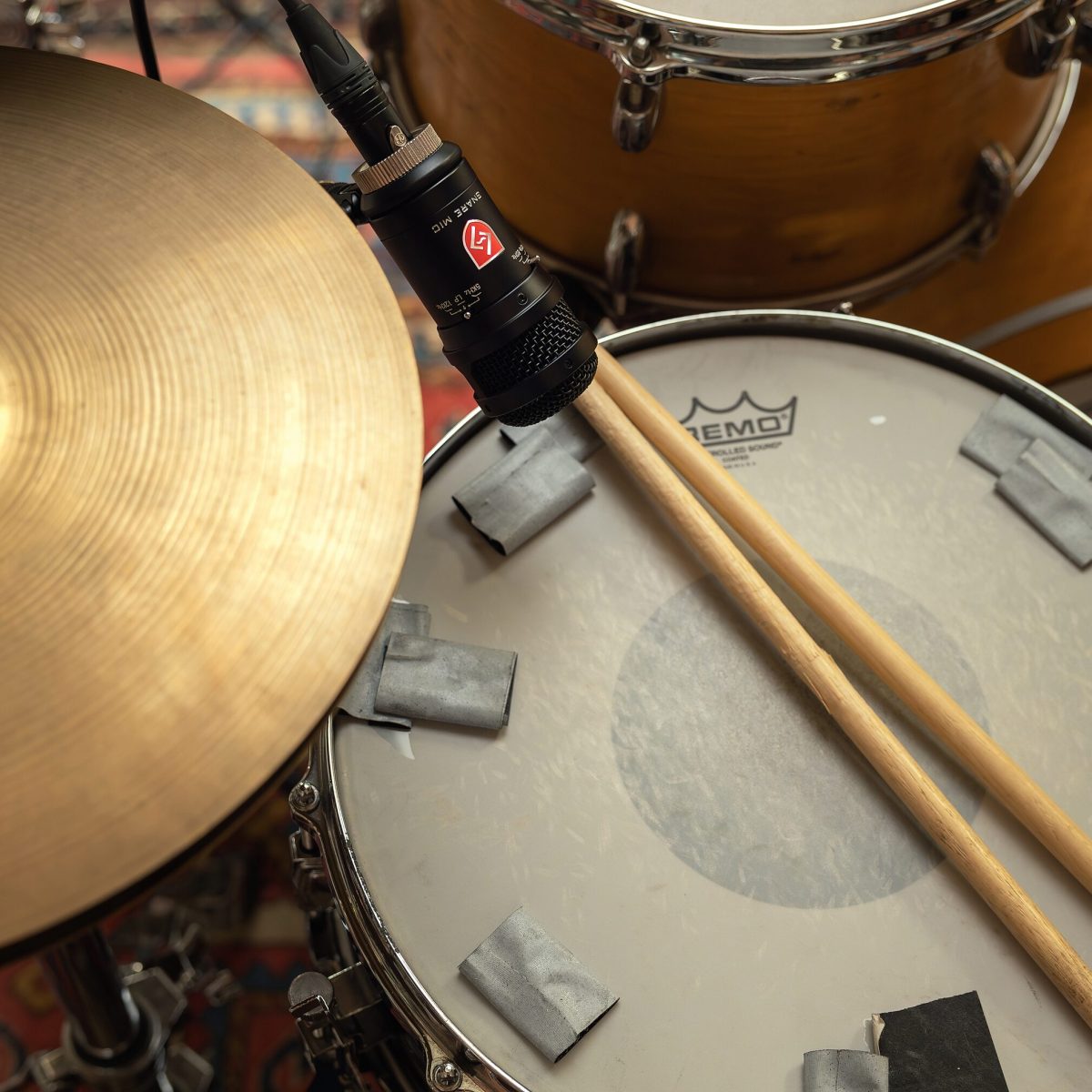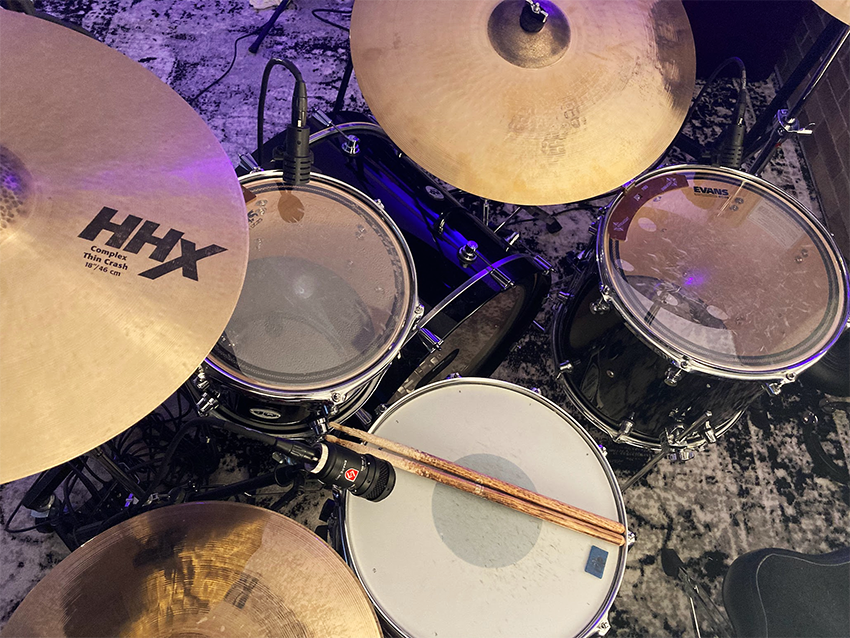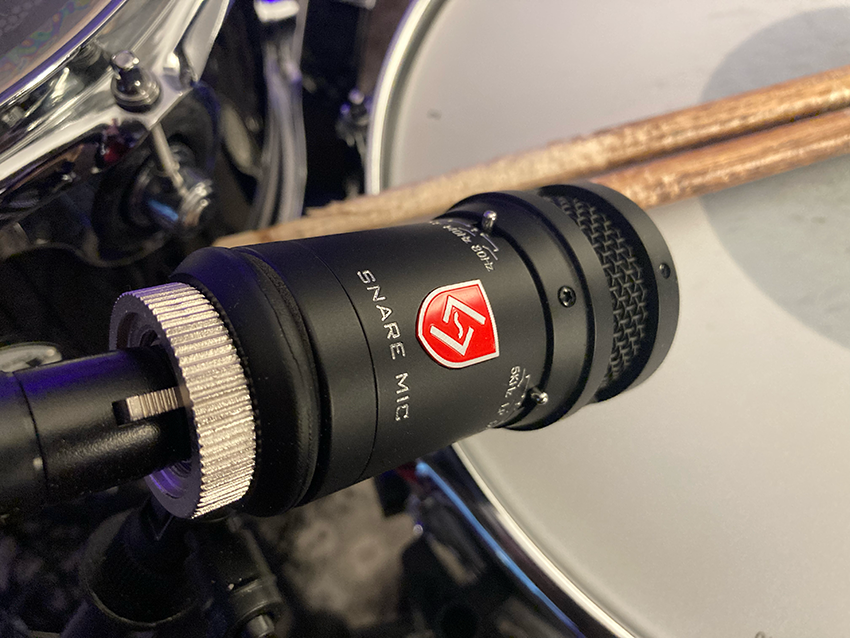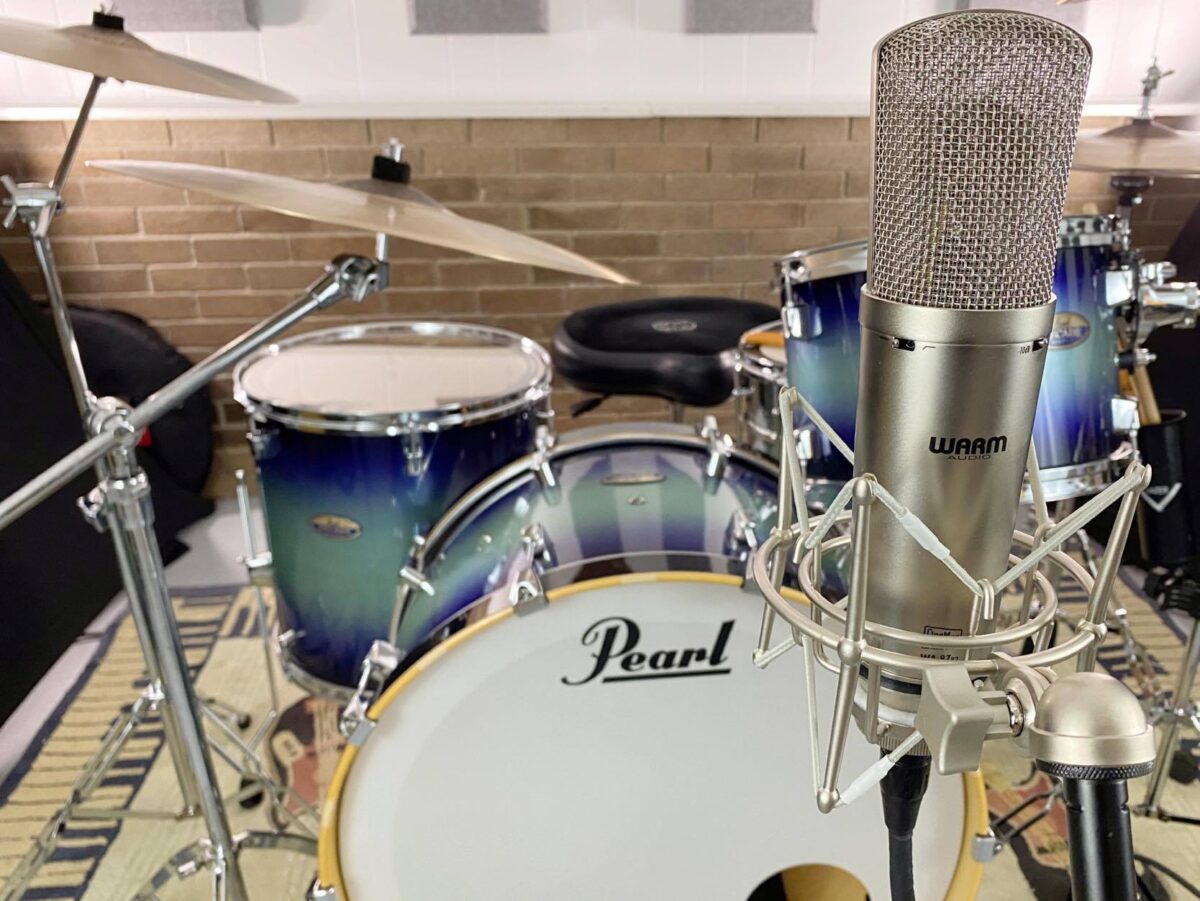Lauten Audio has pioneered the first-ever FET condenser for miking snare drums! The Lauten Audio Snare Mic offers drummer-friendly options ideal for studio or stage that make sure you always capture the true essence of your beloved snare drum. From its high decibel handling capsule, to its multiple frequency cut options, we’ll take a look at just what the Lauten Audio Snare Mic can do and how the snare drums it captures end up sounding.

The Condenser Advantage
Capturing the true sonic nature of a drum is incredibly difficult. From their high decibel sound to the variable nature of mic position, capturing a drum’s true essence isn’t a perfect science. That’s why the Snare Mic was purpose-built to be the first FET condenser microphone for snare drums. It offers high SPL handling (up to 135dB), and because of its condenser design it captures incredibly articulate top-end impacts, tangible shell timbre, and chest-pounding fundamental frequencies (the lowest overall frequency of the snare.) From top to bottom in the frequency range, the Snare Mic captures it all; that’s something that cannot be said for the common dynamic snare microphone.

So why not just place any condenser (FET or not) on your snare to achieve these results? Condensers are just too sensitive to record such high-impact, loud tones at such a close proximity. As stated before, the Snare Mic is designed with high SPL handling and a vibration-resistant capsule, so you’ll get high-quality captures even when you mount this mic on the drum. Also, typical condenser microphones with a cardioid polar pattern offer very little rejection. This mic is built with 28dB of off-axis sound rejection, this means you’ll capture mix-ready sonics with optimal phase coherence directly out of the microphone. And with a frequency response from 20Hz to 20kHz, it captures the entire sonic picture of your snare drum.

Related: No Excuses: Four Ways to Record Drums with One Microphone
Though there are countless techniques for recording with a single microphone, here we look at 4 major techniques. | Read »
The Start of Sound Shaping
The Lauten Audio Snare Mic offers 6 total frequency-range filtering toggles with two selectable at one time right on the microphone. Two low-cut filters at 80Hz and 140Hz, and two high-cut filters at 5KHz and 12KHz, with a flat high-cut and flat low-cut settings that don’t filter anything coming through the microphone. First we’ll take a look at the “Flat/Flat = High Impact” sound shaping option to get a baseline. This is achieved by selecting both the “HP” and “LP” toggles on the microphone, and it means nothing is being filtered through the microphone. The tone is clear with moderate rejection of hi-hat and kick, but the bleed is is still there. This option really showcases that behind all the bells and whistles, the Snare Mic is truly a fantastic microphone.
Moving onto a bit more bleed reduction, the next setting is nicknamed “EQ’d Dynamic Mic” by Lauten Audio. It features the 80Hz and 12KHz toggles. These frequencies are where the lower kick and floor tom frequencies sit (around 80Hz) and the highest of high cymbal and hi-hats sit. These selections cut those frequencies and keep the fundamental frequency of the drum as well as a bit of upper and lower frequencies.
Venturing closer to the snare frequencies is the “Bleed Decimator” setting. This is with the 140Hz cut and 5KHz cut selected. This means there is a frequency cut starting at these two frequencies, with a cut below 140Hz and one above 5KHz. The result is less kick, tom, cymbal, and hi-hat in your snare mic signal. Truly creeping in on the snare drum fundamental frequency, but allowing for a ton of that bothersome bleed to be eliminated.

When recording for a track it’s important to get as much of the sound design done before mixing. That’s why Lauten Audio designed the Snare Mic, to take the guess work out of tracking snare drums while giving you an incredibly high-quality snare capture in the process.





Leave a Reply